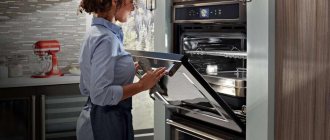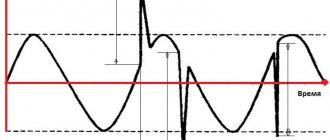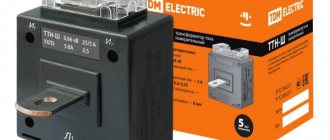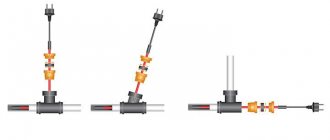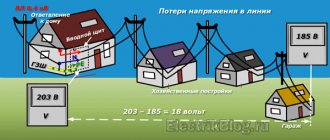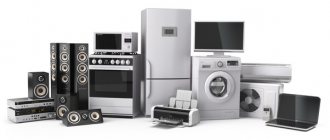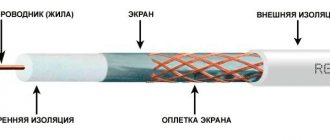Oven power indicators
The power of an electric oven is measured in basic units - Watts (abbreviated W) and more often derivatives - kilowatts (kW). The average amount of energy consumed by household appliances is measured using electrical meters.
A built-in electric oven consumes from 0.6 to 3.65 kW. The average power of an electric oven is approximately 1.6 kW.
What is connecting power
This characteristic includes the power consumed by all heating elements, fans, backlight and electronic control unit.
Important! Electrical wiring, circuit breakers, sockets, etc. must be designed for connecting the connecting power.
Ovens are usually used together with hobs (electric or gas appliances) or independently.
Information about the connecting power of the built-in electric oven, the parameters of the electrical wiring and circuit breakers required for connection is given in the table below:
| Type of equipment | Mains voltage, V | Maximum power consumption, kW | Copper cable cross-section for single-phase connection | Copper cable cross-section for three-phase connection | Circuit breaker parameters |
| Oven + electric hob | 220/380 | No more than 11 | Up to 8.3 kW/4 mm2, PVS 3x4 cable 8.3–11 kW/6 mm2, PVS 3x6 cable | Up to 9 kW/2.5 mm2, PVS 3x2.5 cable 9–15 kW/4 mm2, PVS 3x4 cable | Separate at least 25A/32A/40A RCD |
| Electric hob | 220/380 | 6–11 | Up to 8.3 kW/4 mm2, PVS 3x4 cable 8.3–11 kW/6 mm2, PVS 3x6 cable | Up to 9 kW/2.5 mm2, PVS 3x2.5 cable 9–11 kW/4 mm2, PVS 3x4 cable | Separate at least 25A/32A/40A RCD |
| Oven | 220 | 3,5–6 | Up to 4 kW/2.5 mm2, PVS 3x2.5 cable 4–6 kW/4 mm2, PVS 3x4 cable | Up to 4 kW/2.5 mm2, PVS 3x2.5 cable 4–6 kW/4 mm2, PVS 3x4 cable | 16A, 25A |
| Gas hob | 220 | No more than 3 | 1.5 mm2, PVS cable 3x1.5 | 1.5 mm2, PVS cable 3x1.5 | 16A |
RCD - residual current device. It is a fast-acting means of protecting a person from the effects of electric current and fire in electrical wiring when faults occur in it or connected electrical appliances.
The RCD compares the current flowing to the electricity consumer with the current returning from it. If they are not equal, the device turns off the voltage supply to the consumer. An RCD is installed in the distribution board near the electric meter.
Important! If the electrical wiring parameters in the house do not correspond to the connecting power of the purchased oven, you will have to choose another unit or redo the wiring.
Varieties
The first category is special in that it has panels on the front that control the burners and oven, which is why it can only be used with certain categories of hobs. Manufacturers immediately offer hob options for a number of ovens. In addition, the disadvantage will be the need to place devices close to each other for connection.
The second category differs from the first by the presence of its own switches. Such solutions are used with any hobs or, without them at all. Yes, and you can embed these options anywhere.
This will affect how the built-in oven fits into the kitchen wall or cabinet.
READ MORE: Pruning spruce scheme
Oven energy consumption classes
How much energy an electric oven consumes depends on its volume: the larger it is, the greater the power required for heating.
The amount of energy consumed by the device is characterized by the energy efficiency class, which is indicated on the label and in the user manual. The power of the built-in electric oven directly depends on the volume:
| Energy class | Power consumption for an oven with a volume of less than 35 liters, W | Power consumption for an oven with a volume of more than 35 liters, W |
| A | less than 0.6 | less than 0.8 |
| B | 0,6–0,8 | 0,8–1,0 |
| C | 0,8–1 | 1,0–1,2 |
| D | 1–1,2 | 1,2–1,4 |
| E | 1,2–1,4 | 1,4–1,6 |
| F | 1,4–1,6 | 1,6–1,8 |
| G | more than 1.6 | more than 1.8 |
Calculation of oven energy consumption
In order to calculate the electricity consumption of an oven, how much it consumes, you need to know how often the oven is used, in what modes, for how long, what tariffs. And therefore the calculation is purely individual. Most often, ovens are purchased that consume average power, which means that their operation is 60% of the maximum, that is, 800–850 W/hour. To find out how much the oven incurs per month, you need to multiply the number of kilowatts consumed by the oven by the number of hours it operates per month. Or the amount of energy consumed hours will need to be multiplied by the average operating power (800 W). This means that thanks to this method, you can get information about how many kilowatts are consumed by the oven.
When making calculations, do not forget that 1 kW equals 1000 W.
How to save energy
When purchasing, choose a model with minimal electricity consumption. When operating, adhere to simple rules:
- if the house has a preferential tariff for paying for electricity at night, if possible, prepare dishes in the oven at this time (details about prices are provided by the resource supplying organization);
- use the unit for the minimum required time;
- do not run cleaning modes for work surfaces with high energy consumption (hydrolysis and pyrolytic) too often;
- the preheating mode is used only when it is provided for in the recipe of the dish being prepared;
- if there are long-cooking dishes in the cabinet, the equipment is turned off 5–10 minutes before the control date: during this time the food will reach its proper condition, but no electricity will be consumed.
When cooking, make sure that the device door is tightly closed.
Dependence of temperature on power
There is a direct relationship between the maximum cooking temperature and the power of the electrical appliance, which affects the electrical consumption class of the appliance. Temperatures in ovens starting from 3.5 kW can reach up to 500°C. But heating to such a high level is rather an unusual feature, since most dishes require only 220°C to cook. In connection with this optimal value, it is better to choose an oven with a power of 2.5–3 kW and a maximum temperature of 250°C.
The market favorites in terms of power are represented by the following devices:
- Bosch ovens equipped with an ecological cleaning system EcoClean, they achieve extreme precision in the temperature range from 30 to 300 ° C;
- Samsung models are distinguished by a soft oven door opening system and Multi-rack technology, which ensures the comfort of changing modes during the cooking process;
- Electrolux ovens have built-in electronic timers and convenient temperature sensors;
- Gorenje representatives are distinguished by a variety of heating modes and steam cleaning of internal surfaces.
How to choose an oven
Choosing an oven is a responsible matter. Equipment is purchased for long-term use, and it will not be possible to add missing functions to it after purchase.
Cabinet type
Structurally, ovens are divided into 2 groups: dependent and independent. The first ones, as a rule, are located under the hob and are connected to it by connecting wires. This design is similar to a regular stove; the control panel is common to both devices and is located on the front of the cabinet.
The latter can be mounted in any convenient place, since they are in no way connected with the hob. As a rule, such devices are built into a pencil case at eye level to make it convenient to observe cooking.
Important! In the latter case, pay attention to good ventilation of the pencil case and thermal insulation of the device body from furniture. Otherwise there is a risk of damage or fire.
When choosing a dependent option, make sure that the products are compatible, even if they are made by the same manufacturer. For this purpose, special tables have been created, which are posted on the official website of the manufacturer.
In the independent version, the hob comes with any number of burners; in the dependent version, most manufacturers offer only a four-burner version.
Combined models are available: a gas panel with an electrical cabinet, but their range is small.
Dimensions
The most common ovens have standard dimensions of 600x600x560 mm. Narrow (600x450x560 mm) and wide (600x900x560 mm) models, low (380–500 mm high) and high (900 mm) models are available.
The choice of product dimensions depends on its purpose and the size of the kitchen furniture. The selection of functionality is based on the same ideas.
Functional
The capabilities of the manufactured units are very diverse. Let's look at the most significant of them.
Cleaning function
There are traditional, catalytic, hydrolysis and pyrolytic methods for cleaning the internal surfaces of the oven.
The traditional method is manual cleaning of contaminants using conventional detergents.
The catalytic unit is equipped with special panels on which copper or manganese oxide is applied. The pores contain a catalyst that ensures the decomposition of fat into carbon, water and organic matter. Cleaning occurs when using the device; the surfaces are simply wiped with a cloth.
Important! Catalytic panels have a limited service life, so they will have to be replaced at the intervals specified in the instruction manual.
The hydrolysis cleaning method uses water and detergent, which are poured into a baking tray. It is placed in the included product. The resulting steam softens the dirt; the surfaces are wiped with a cloth.
The pyrolytic method is fully automatic, based on burning food residues at high temperatures, which turn into ash. Devices that use pyrolysis are the most expensive.
The last two cleaning methods involve additional energy costs, and the cost of the ovens in which they are implemented is the highest.
Culinary functionality
The following operating modes are used in ovens.
- Grill. There are devices with or without forced convection. Convection is the mixing of air in the work area using fans. Thanks to this, the air heats up more evenly and food cooks faster. In this mode, baked goods, meat, fish, and chicken are prepared. Appliances with convection are more expensive than those without.
- Defrost at room temperature . The heating elements do not work, and the food is blown by fans.
- Fast defrosting. One heating element operates at minimum power. The fan blows warm air through the working volume.
- Standard mode. The heating elements are used depending on the cooking program.
- Accelerated mode - standard plus fans.
- Fast multi-level mode . All heating elements and fans are activated. The products are on different baking sheets at different heights. This allows you to cook two different dishes without their flavors mixing.
- Browning mode . Only the top heating element is used, which creates a crispy crust.
- Microwave mode. Ovens are produced with a source of high-frequency electromagnetic field - a magnetron. This allows you to quickly reheat ready meals.
- Steaming. The steam generator in the model is used as a double boiler - as a result, the maximum amount of useful substances is preserved in the products.
Additional options
These functions simplify the use of the device and improve the quality of prepared dishes:
- The PerfectRoast option allows you to use the temperature probe to control the temperature at three points of the dish with an accuracy of 1°C. This will ensure high quality frying of the products. The device is purchased separately.
- A spit is a useful accessory for cooking kebabs and barbecues. If the oven has forced convection, it is not necessary to use a spit.
What affects the power of an electric oven?
It is also worth considering the fact that built-in appliances always consume more energy than free-standing appliances. The average built-in oven will use 4,000 watts, while a freestanding oven will use around 3,000 watts.
Are these indicators really that important or is their importance overestimated? In fact, a lot depends on the power of the stove. For example:
- The amount of electricity consumed directly depends on the power: the more powerful the oven, the less electricity is consumed.
- An oven with a higher power will cook much faster than a less powerful oven.
- Spending on light becomes noticeably less.
Thus, knowing how much energy a particular electric oven consumes, you can choose the best option for yourself so that the oven becomes a real helper in the kitchen, without extra costs for electricity.
The oven is a device that no self-respecting housewife can do without. This device makes it possible to bake various foods and prepare amazing dishes that cannot be prepared in any other way. But there are various models of such devices, which differ greatly from each other not only in characteristics and appearance.
It should be taken into account that built-in equipment will consume significantly more energy than a free-standing device. The average built-in option will consume about 4 kW, and the autonomous one - no more than 3.
READ MORE: Slab insulation – tile insulation for walls, perlite cement products and slab version made of mineral wool
And you should not underestimate the power factor as such, because quite a lot depends on it.
- The amount of electricity that is consumed will depend on the power, and as a result, the bill for electricity consumption at the end of the month. The more powerful the oven, the greater the consumption.
- Models that have higher power will cope with cooking faster than some low-power models. Spending on light is reduced, as mentioned above.
That is, to summarize the above, if we know how much the equipment we are interested in consumes, we can find the most profitable option so that it provides maximum efficiency with minimal electricity costs.
At the end of our short article, we will summarize and weigh the pros and cons of each type of oven. Let's start with the electric oven:
- rich functionality is the main advantage of such models (you get the maximum of available programs, modes and settings);
- a wide selection of models (including compact, built-in, with the best energy efficiency indicators);
- ease of connection (plugging the unit into an outlet is easier than connecting a gas pipeline);
- convenient to use in non-gas-free houses, in the country, in the office, in small studio apartments (if the condition of the networks allows);
- purchase and operation will cost more (the main disadvantage);
- load on the network (especially critical if you have a lot of powerful electrical appliances).
If the presence of programmable functions and precise control of all cooking processes are important advantages for you, feel free to buy an electric oven.
The company has been present in the household appliances market since 1994, its own trademark appeared in 2005, and the production facilities of the Lex brand are located in several countries around the world - China, Italy and Poland.
Initially, the concern specialized in kitchen hoods, but over time, the range also included other large household appliances, including built-in electric ovens. Such models very quickly earned popularity among buyers, especially in the CIS countries.
Today, extensive experience allows Lex engineers to create stylish, practical and reliable ovens in the mid-price segment. The model range is represented by built-in ovens. Lex is still in its development phase, but for many customers the brand has already become synonymous with functionality, quality and durability.
To confirm these words, we will give several arguments in favor of such household appliances.
Models such as the LEX EDP 110 IX are equipped with top and bottom heaters, a fan and a grill. Convection in combination with the combined heating function almost instantly increases the temperature in the oven to the desired level.
A high-quality stainless steel case, a double-glazed door, modern trouble-free electronics, durable components and fittings - all these factors significantly increase the service life of Lex equipment.
Thoughtful design
The current range of Lex ovens is represented by built-in models. Ultra-modern and minimalistic, vintage and classic - they will fit well into any design. The company's engineers carefully monitor current trends and the most popular solutions in the field of interior design. Our extensive and varied catalog is the best proof of this.
Easy to care for
Thanks to the high-quality internal coating of the chamber, servicing Lex ovens does not pose any particular difficulties. Dirt can be easily removed with a regular soft sponge, both from the walls of the oven and from the front side.
You can evaluate the range of Lex ovens in the catalog of our online store. In a separate section of the site you will find current models - high-quality household appliances, which we sell with a guarantee from the official manufacturer.
The majority of the model range consists of built-in electric ovens with a baking chamber volume of 58 to 62 liters. The number of available heating combinations varies from 4 to 11 (including grill and convection function), temperature setting accuracy is up to 5°C, control type is mechanical.
This is not a complete list - new models appear every year, and we, in turn, regularly update the assortment of our website.
If you are interested in LEX products, contact the manager of our online store of branded household appliances. He knows everything about new products and current engineering developments, and will also be happy to answer any of your questions.
Safe Operation
It is better to buy a product with double or triple glass in the door and the ability to lock it. This is especially important for families with small children. The glass will protect against burns, and the lock will protect against accidental opening of the door by small cooks.
When operating the oven, follow the following safety precautions:
- carefully study and follow the operating instructions;
- do not leave a working device unattended;
- when using baking sheets, wear protective gloves;
- Do not store flammable items near the cabinet.
What to consider when choosing
The rating helps you find out the features of different models and compare them. But it is not enough to understand which oven is better to buy and what needs to be taken into account when purchasing?
It is important to pay attention to the following characteristics: 1. Dimensions . Important when integrating an oven into a kitchen unit. . 2. Camera functionality . With the same basic parameters, each oven can operate differently. On some it is more convenient to cook different small dishes together, while on others it is more convenient to cook a large piece of meat or roll. Consider your family size. 3. Energy efficiency . Some companies position their electric ovens as ultra-economical with class AA and even AAA. But you won’t notice a big difference in electricity consumption (in monetary terms). 4. Power . The higher it is, the better for quick frying. Regardless of its indicator, under equal operating conditions and settings, all electric ovens have approximately the same energy consumption and efficiency. But when you need to cook a lot of food and very quickly, a conventional electric oven of 1 - 1.5 kW will not cope. But with an analogue with a power of 3 kW it will be easier to do this. 5. Useful options
. For example, control from a smartphone or automatic cooking programs.
By the way, if you like to bake rather than fry and adhere to a healthy diet, a double boiler will probably be useful for you - we have just compiled a selection of the optimal models. And as a snack, a smoothie is perfect: it can be prepared in a stationary blender.

